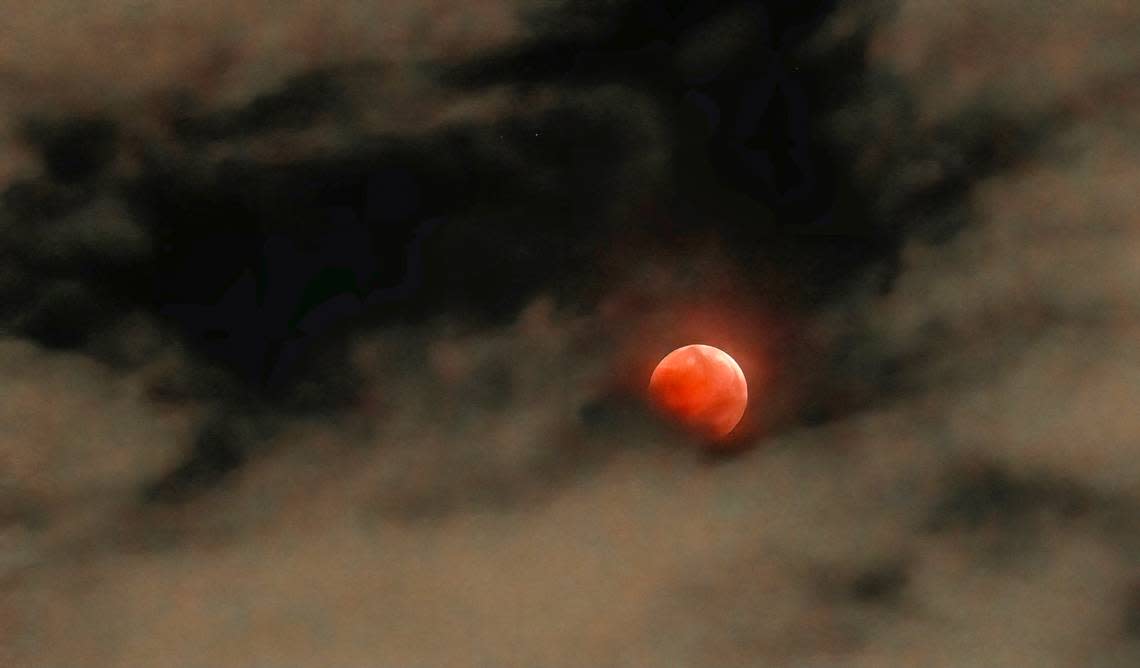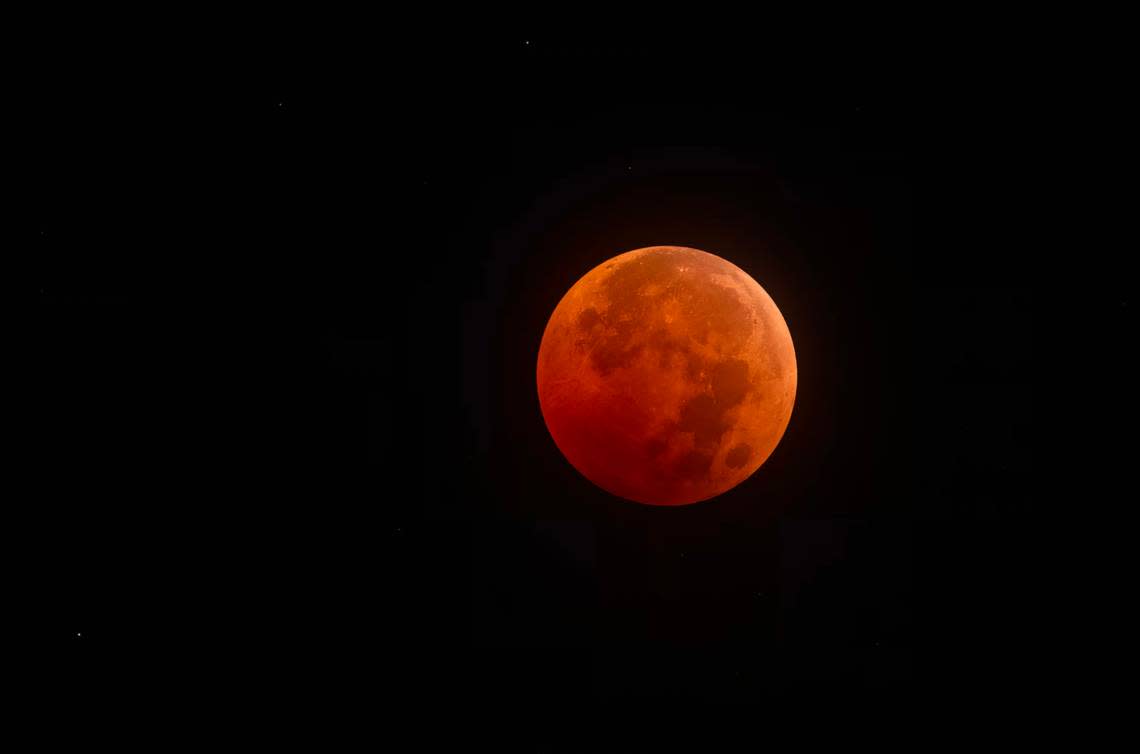Clouds over KC part just in time for early risers to see last Blood Moon for three years
Cloudy skies over Kansas City cleared just in time for some early risers on Tuesday to see the last total lunar eclipse, commonly known as a Blood Moon, for three years.
It was uncertain whether the weather conditions would cooperate and allow those in Kansas City to see the moon take on a reddish rust or blood color.
The totality stage of the eclipse, where the moon was entirely in the Earth’s shadow, began at 4:17 a.m. and ended at 5:42 a.m. Kansas City time, according to NASA.

The cloud cover disappointed people, with some giving up on the possibility of seeing the phenomenon.
“We were going to tweet about the lunar eclipse tonight but the only thing we really have to say about it is it will be the last one that you won’t be able to see until 2025!,” the National Weather Service in Kansas City said on Twitter along with “#ThanksCloudCover.”
A lunar eclipse occurs when the sun, Earth and moon align with the moon passing into the Earth’s shadow.
Depending on the weather, the reddish moon was visible for 85 minutes from North America, parts of South America, Asia, Australia and New Zealand, according to space.com.
This was the second total lunar eclipse of this year. The other was in May.
The first moon of November is called the beaver moon, so some were referring to Tuesday’s lunar eclipse as a “Beaver Blood Moon.”
The next total lunar eclipse will occur on March 14, 2025.

